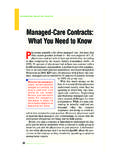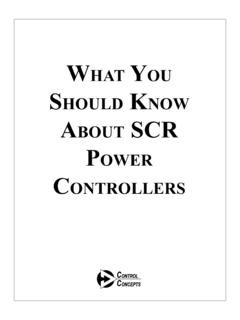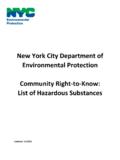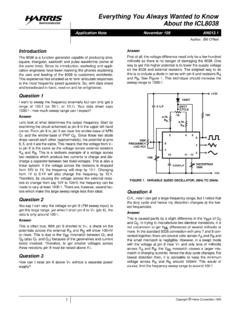Transcription of Substance Abuse Among Physicians: What You …
1 Ost physicians are not surprised when toldthat more than 10% of Americans have asubstance Abuse problem at some time dur-ing their who has rotatedthrough an emergency department is aware of themagnitude of the problem. However, many are un-aware that physicians themselves develop substanceabuse problems at least as frequently, and perhapsmore frequently, than the population in ,3 Although the exact rate of Substance Abuse amongphysicians is uncertain, even the most conservative esti-mates are that 8% to 12% of physicians will develop asubstance Abuse problem at some point during ,5At any given time, as many as 7% of practicingphysicians roughly 1 out of every 14 are active sub-stance ,5No group of physicians are numbers are similar for every specialty.
2 Everyregion of the country, every age range, in urban orrural areas, and in academic medicine versus privatepractice. The impact of the problem is severe. Chemical im-pairment has been shown to be a major risk factor formedical malpractice and negligence lawsuits,6thedevelopment of physical and psychological illness,7andadverse effects on the Substance abuser s , the mortality rate of Substance Abuse amongphysicians has been reported as high as 17%.7 Despite its high prevalence Among physicians, sub-stance Abuse is rarely discussed at professional meet-ings (with the exception of anesthesiology organiza-tions) and receives limited coverage in medical schoolcurricula.
3 In the majority of cases, physicians with sub-stance Abuse problems remain undetected by their col-leagues for several years before any intervention ,8 How does such an endemic problem remain soignored? Largely because physicians who are abusingdrugs or alcohol work hard to keep their problem invis-ible. The physician abuser often becomes a loner, avoid-ing colleagues and friends who might notice the effectsof Abuse . Any suggestion that the person s behavior orperformance has changed is first met with explanationsand later with simply avoidance or outright anger. Theabusing physician will often leave a job (or several jobs)rather than risk being identified as inability or unwillingness of physicians to recog-nize the signs and symptoms of Substance Abuse intheir colleagues also contributes to the delay in identi-fying the physician with a Substance Abuse every physician is familiar with the patients withend - stage alcoholism or drug Abuse who haunt emer-gency departments.
4 However, far fewer physicians con-sider Substance Abuse as a possible diagnosis beforethat end stage is reached. Fewer than 40% of primarycare physicians routinely question patients regardingalcohol Abuse , and fewer than 20% screen for potentialdrug a small minority of physicians feelthey have a basic knowledge concerning the diagnosisand treatment of Substance Substance Abuse in a physician is evenmore difficult than diagnosing the problem in the gener-al population. Most physician Substance abusers continueto function quite well until the problem is far their work provides either the income for drugsor access to drugs, physicians are very likely to protecttheir performance at work until the disease has nearedend stage.
5 The duration of this period varies largelyaccording to the Substance (s) involved. Alcoholics canoften remain sober during working hours for manyyears, even though they drink large quantities at nightand on weekends. Intravenous opiate or cocaine abusers,on the other hand, may go from experimentation to col-lapse in a matter of weeks or , signs of Substance Abuse are usuallypresent to the objective evaluator, and certain risk fac-tors for the problem are well recognized. Given that asmany as 10%3to 15%1of our colleagues develop a sub-stance Abuse problem during their careers, each of usshould become aware of the signs and symptoms of theMDr.
6 Cicala is an Associate Professor of Anesthesiology at the University ofTennessee College of Medicine and a staff physician at the Semmes -Murphey Neurologic and Spine Institute, Memphis, TN. He is alsoAssistant Medical Director for West Tennessee for the Tennessee Physi-cian s Health Network. - physician July 200339 Substance Abuse Among Physicians: what You Need to know Roger S. Cicala, MDCareer Pulseproblem, and know how to contact the appropriatesupport groups to provide treatment and aftercare tothe physician when needed. CHARACTERISTICS OF Substance ABUSEU nfortunately, the public and far too many physi-cians continue to think of Substance Abuse as a badhabit or a moral weakness rather than as a ,9 All modern medical authorities, however, consider sub-stance Abuse to be a neurologic or psychiatric illnessthat is contributed to by genetic, social, emotional, andpsychological ,3,6,11.
7 12 The individual with atrue Substance Abuse disorder is no more able to con-trol their disease without treatment than a person withsevere endogenous depression is able to stop feelingdepressed through will power. While the term drug addiction remains in wide-spread use, it is generally avoided by Substance abuseprofessionals because of its emotional terms Substance Abuse or Substance depen-dence are preferred for clinical diagnosis. The Amer-ican Psychiatric Association s Diagnostic and StatisticalManual of Mental Disorders(DSM-IV) defines substanceabuse as a maladaptive pattern of use of a chemicalsubstance within a 12 month period that significantlyinterferes with the person s life as indicated by any 1 ofthe following13:1.
8 Neglect of work, school, or home obligations2. Recurrent use of the Substance in hazardous sit-uations (eg, driving, operating machinery, or in the case of a physician caring for patients) 3. Repeated Substance - related legal problems4. Continued use of the Substance despite recur-rent social or interpersonal problems associatedwith its useA simple summary of the DSM-IVcriteria for sub-stance Abuse is repeated use of a mood altering chem-ical, despite adverse consequences from previous use. By such a definition, any individual who receives a sec-ond arrest for driving while intoxicated would be auto-matically be considered to have a Substance abuseproblem because he or she continued to drink anddrive despite having previous adverse consequences.
9 Physical dependence, that is, the development of with-drawal symptoms when abstaining from the Substance , isnot necessary to make the diagnosis of Substance substances of Abuse notably the hallucinogens,marijuana, and, to some extent, cocaine do not resultin significant physical withdrawal symptoms even if takenin massive quantities for a prolonged abusing substances known to cause withdrawalsymptoms, some abusers spend years in exhibiting abinge pattern of Abuse and never experience classic with-drawal. Binge Abuse episodes of excessive drug or alco-hol use followed by weeks or months of abstinence iscommon early in the course of Substance ,3A binge alcoholic, for example, may go weeks or monthswithout a drink to prove that they do not have a prob-lem.
10 When they do drink, however, they often drink farmore than they had planned and frequently have ad-verse with most chronic diseases, the long- term courseof Substance Abuse is one of deterioration over the early phases of the disease, however, manyindividuals have a waxing and waning course as theirefforts to control the problem have some short- termsuccess. As the disease progresses, attempts at self con-trol become shorter and less effective, and the effectson the individual, as well as on his or her family, be-come ,10 The time course of deterioration varies according tothe individual and the Substance of Abuse .








